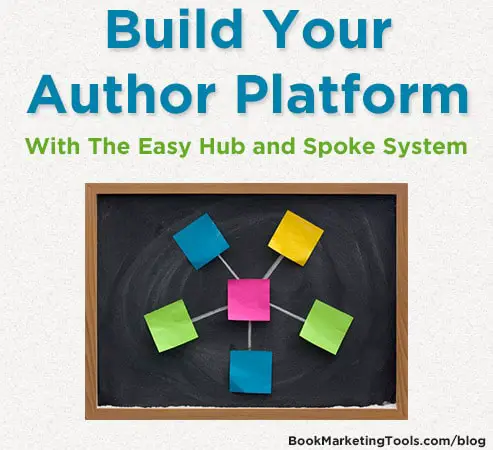Confused about your author platform, why you need it, and how to build it? Lucky for you, author Carmen Amato makes it easy for you in this guest post. She shows you exactly what you need to do to build your platform.
“Author Platform.” You keep seeing that phrase. Every author has to have one, you read, but it isn’t something an author can just go out and buy.
Google your author name. Did you get search results like your website, Facebook page, Twitter profile, pictures you posted to Instagram, guest posts, book pages on Amazon and Goodreads?
Those results are your author platform.
Why you need to build the Platform
Ask yourself a few questions:
- Do the search results all showcase the same professional author photo? Do they convey the same tagline and concepts about who you are as an author?
- Are there several different opportunities for search engines to find you or are you relying on that single Facebook profile? The fewer pieces of Platform that you have, the harder it will be for readers to find you.
Online readers don’t have long attention spans. They can’t be expected to put in a lot of effort to discover a new author.
Perhaps a reader of your genre follows you on Facebook. But when they follow a link to your Amazon book page, it doesn’t seem to be quite what they expected.
Result? Lost book sales.
Hub and Spoke
Solve the discoverability problem by building a solid author Platform.
The hub of your Platform should be your author website. Your website should:
- Describe yourself as an author
- Provide contact information
- Describe your books
- Link to your book sales pages
- Have some way for readers to stay connected to you, i.e. newsletter signup
The spokes of your Platform come in two forms:
- Social media accounts, including Facebook fan page and personal account
- Extras like guest blog posts, articles for magazines, and interviews
Building Your Author Platform
Step 1: Design your author website
The website isn’t just the information hub of your Platform, it is also the design hub. Pick colors, images, patterns, fonts, and concepts that you can carry over to other Platform spaces. Some authors create mood boards so that the elements they use across their Platform is easy to remember and reuse.
I’m a mystery author, so when I set up my first website I used a mysterious white spiral staircase graphic as inspiration for my Platform, incorporating the same design into the blog header, Facebook cover image, and Twitter profile picture. As time went on, and the website needed more functionality, I upgraded. The imagery now showcases my signature black bag
It’s important to use colors and images that support your genre. Purple text may be fine for a romance writer but may be off-putting if you write Civil War history. Don’t get a pre-made WordPress theme with flowers or soft pink tones to be the hub of a science fiction author site.
Step 2: Pick your key social media accounts
There is so much to choose an author must use time wisely. I find that Facebook, Twitter, and Pinterest serve me well, with the occasional dive into Goodreads groups. If I want to get busy on YouTube or SlideShare, I’ll have to drop something else.
Once you have the accounts set up, reuse all the same design elements on your social media accounts as are on the website. Twitter is especially fun to customize; I even was able to make links the same color as an accent color on my website. . And yes, when I upgraded my website imagery, all my social media accounts got a makeover, too.
Use the same author photo and cover/header art on every social media platform as on the website. Do not use a book cover as your profile picture, unless you are sure you’ll never write another book. It is a good way for readers to assume you are a one-hit-wonder.
Bottom line: Your design should be eye-catching, consistent with your genre, and the same everywhere.
Step 3: Select enduring keywords
Keywords are as important as design in keeping the hub and spoke Platform rolling. Use the same keywords across the Platform. This practice will help search engines drive the right readers to your Platform as well as ensure that your message stays consistent. If you aren’t sure what keywords to use, check out Google’s Keyword Planner. Find enduring keywords like “romance author,” “thriller novels,” “crime fiction,” or other phrases that you can use over and over. These enduring keywords are different from keywords you might use for a particular blog post.
Use these keywords in your website description, Facebook fan page “About section,” Amazon Author Central bio, social media account profiles, etc.
Keywords should be included in the bio you use for guest blog posts, like the one below.
One Step at a Time
That’s it! When you focus on consistent design, wise use of social media accounts, and enduring keywords, your Platform will help take your author career to the next level!
In addition to political thriller The Hidden Light of Mexico City, Carmen Amato is the author of the Emilia Cruz mystery series set in Acapulco, including Cliff Diver, Hat Dance, Diablo Nights, and the collection of short stories Made in Acapulco. Originally from New York, Carmen’s experiences living in Mexico and Central America drive the authenticity and drama of her writing. Visit her website at carmenamato.net for a free copy of The Beast, the first Emilia Cruz story.

